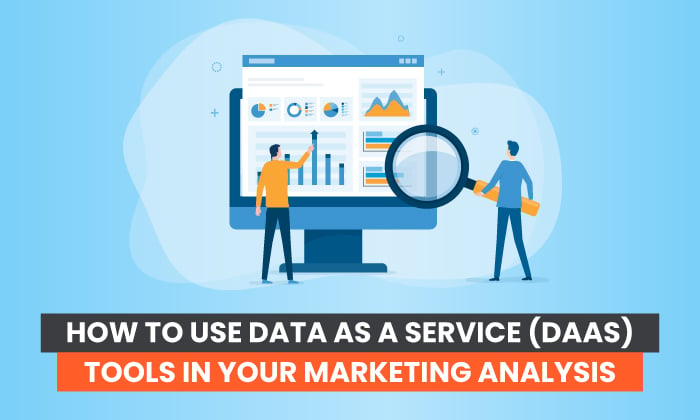Beyond Views and Likes: How to Choose Better Metrics to Measure Your Content Marketing
We all love to see a piece of our own content go viral. It makes us feel like superstars. I won’t lie: it’s a great feeling. But here’s the thing: most blog articles go viral for unknown reasons. Everyone...

We all love to see a piece of our own content go viral. It makes us feel like superstars. I won’t lie: it’s a great feeling.
But here’s the thing: most blog articles go viral for unknown reasons. Everyone who’s ever had a “viral happy accident” happen to them subsequently tried to re-create that scenario. They rarely succeed.
There are two major problems with chasing online fame (and nothing else):
It rarely happens. Most blog posts get fewer than 10 views.As cool as it may be, fame doesn’t pay the bills.While views and shares are important, they are not the most important metrics you should be tracking for a business content marketing strategy. The only bloggers who should focus excessively on these two metrics are the ones who run ads on their blogs and get paid by the number of views.
If that’s not your case, read on.
3 Better Metrics to Track Instead of Views, Shares, and Likes
If you run a business blog or create any other type of content (like 91% of B2B marketers do), you have to evaluate your performance regularly, right? Cool! Here’s where to begin:
1. Brand Awareness
I’ll be the first to admit: this one is tough. Extra tough!
There are very few ways to measure brand awareness and most of them are unreliable. Plus, you’ll need to correlate them with other factors. Some of my favorite (albeit imperfect) strategies include:
An uptick in overall web traffic – correlate with the amount of people who discover your website through one of your content pieces.An uptick in organic visits – a great way to find out which types of content perform better in terms of SEO.Referral traffic – how many people link to your content?Search popularity – are people searching for your brand? If so, can you track it back to content?Earned media value – does your content bring in earned media? For instance, do media outlets reach out to you for an interview or for an expert take on a topic because they consider you an expert thanks to the content you publish?Again, all of these are very, very hard to quantify. It’s why you’ll rarely see a CMO say something like “our content strategy brought a 23% YoY increase in brand awareness”. It’s next to impossible to determine exactly how many people know about your brand and how many of them found it via content.
I run two digital marketing agencies and I only have a vague idea about it. I know that our content attracts readers and customers, as well as social media followers. I also know that it has earned me personally spots on lists like the top 100 content marketing influencers by Semrush.
Of course, all of these things are very important for a business. But I could never tell you exactly how much cash they brought in.
I can tell you, however, without a doubt that any business will thrive on a spike of brand awareness – especially if people become aware of your brand for the right reasons.
2. Lead Generation
This one is much easier to track. Simply look at your analytics account to see how many people who read a blog post of yours (or any other type of content) subscribed to your newsletter or left their contact information in any other type of form.
An in-depth look at this metric will also tell which types of content perform better and should be replicated. Look for patterns: are “how-to” articles performing better than customer stories or is it the other way around?
Last but not least, look at the quality of the leads. A huge email list is worthless if most of the subscribers will never convert to buyers – which takes us to my next point.
3. Conversions
Yes, this is the one metric to rule them all. Your conversion rate tells you how much money your content is bringing in. This is the ultimate goal of every marketing activity, so I hope you’re measuring this regularly.
[Side note: in my experience, not even this can be measured accurately. My agency has had plenty of clients who read an article on our blog, closed the page and took no action…then. But when they needed someone to help with content or copywriting, they remembered us and went straight to our website. In Google Analytics, this falls under direct traffic. I only discovered the real source of our conversions after asking the clients directly.]
Now, about what I mentioned earlier: not all leads gained through content are ideal. Sure, a blog is a great way to get some street cred. 68.5% of users think blogs add credibility to a website.
However, in order to move from street cred to money in the bank, you need your content to match not just your users’ needs, but also your business goals.
Here’s a how-not-to example from my own business: when I first launched my agency, our blog was filled with in-depth articles about copywriting and content writing strategy, tips, tricks, and pretty much anything you can think of. They check all the boxes: they ranked well, they offered thorough explanations, and they were fun to read.
They even brought in leads.
But they weren’t the kind of leads we were looking for. Our leads were fellow copywriters looking for the next hot industry trick. Needless to say, leads were pouring in, but conversions rarely happened.
Now, I love to educate, but I also love paying my bills.
So I changed the strategy: the articles we published were designed to meet our potential customers’ needs AND our business goals. For instance: “How to hire the best SEO copywriters” brought in a lot of qualified leads, while “How to write an About Us page that converts” brought us street cred alone.
Do learn from my mistake: make sure your content checks both boxes if you want it to convert (and I know you do!), not just get shared massively.
Final Thoughts
Write well, write often, but most importantly write with a purpose. If you feel like you’ve strayed from your purpose and your content isn’t performing as expected, I suggest you revisit the KPIs you use to measure it.
Those KPIs can vary widely from business to business. Check out this list of 15 content marketing KPIs that you can add to your tracking list for a more comprehensive view into your content’s performance.

 Astrong
Astrong 


























![Are You Still Optimizing for Rankings? AI Search May Not Care. [Webinar] via @sejournal, @hethr_campbell](https://www.searchenginejournal.com/wp-content/uploads/2025/06/1-1-307.png)



